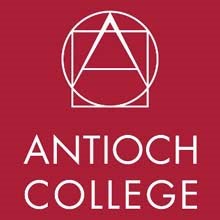GEC supports EPA proposal to cut mercury emissions
Most villagers are aware that in recent years, the Green Environmental Coalition has been involved in an attempt to stop tire burning at the Cemex cement plant 5 miles upwind of YS. In November 2008, Cemex could not make the necessary modifications to their facility, as required by their permit, to conduct a tire test burn before their permit expired. They therefore withdrew their request.
Although, currently Cemex cannot burn tires until they apply for a new permit, we don’t believe this issue is over….it’s just a matter of time. In the meantime, they continue to burn coal and pet coke as a fuel source, mixed with limestone, clay, iron, and fly ash as a component of cement. These raw materials all release toxic emissions into the air we breathe. The Cemex Corporation in general, including the Fairborn plant, has a dismal track record of malfunctions, violations, and the release of toxic emissions.
Currently the USEPA has proposed to amend its national emission standards for Portland cement manufacturing to reduce emissions of mercury, total hydrocarbons, hydrochloric acid, and particulate matter from both new and existing cement kilns.
The GEC supports this proposal and encourages you to join us by signing our petition (www.greenlink.org). The EPA will also accept letters and comments regarding this proposed amendment until September 4, 2009. Please visit our website for more information.
The EPA Proposal:
EPA Proposes to Slash Mercury Emissions from Cement Plants
Washington, D.C. – April 21, 2009) EPA is proposing to significantly reduce mercury emissions from Portland cement kilns, the fourth-largest source of mercury air emissions in the U.S. The proposal would set the nation’s first limits on mercury emissions from existing Portland cement kilns and would strengthen the limits for new kilns.
The proposed standards also would set emission limits for total hydrocarbons, particulate matter, and sulfur dioxide from cement kilns of all sizes, and would reduce hydrochloric acid emissions from kilns that are large emitters.
“We can save more than a thousand lives each year, sharply reduce mercury and other toxins in our air and water, and work with industry to encourage innovations and good ideas that are already out there,” said EPA Administrator Lisa P. Jackson. “Mercury and other chemicals flowing into these communities are health hazards for children, pregnant mothers, local residents and workers - people who deserve protection.”
Mercury in the air eventually deposits into water, where it changes into methylmercury, a highly toxic form that builds up in fish. Americans are primarily exposed to mercury by eating contaminated fish. Because the developing fetus is the most sensitive to the toxic effects of methylmercury, women of childbearing age and children are regarded as the population of greatest concern.
The majority of the toxic emissions at cement kilns come from the burning of fuels and heating of raw materials. When fully implemented in 2013, EPA estimates that this rule would reduce annual emissions by at least:
• Mercury – 11,600 pounds, a reduction of 81 percent
• Total hydrocarbons – 11,700 tons, or 75 percent
• Particulate matter – 10,500 tons, or 96 percent
• Hydrochloric acid – 2,800 tons, or 94 percent
• Sulfur dioxide – 160,000 tons, or 90 percent
EPA estimates the benefits of this proposed rule will significantly outweigh costs.
Read the new standards (PDF)
Subscribe to:
Post Comments (Atom)








No comments:
Post a Comment